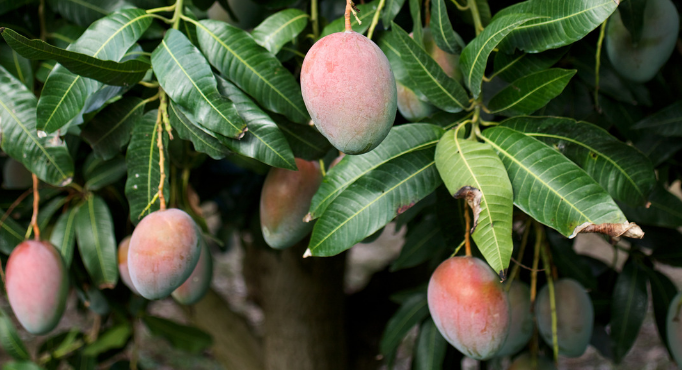Mango
Mangifera indica, commonly known
as mango, is a species of flowering plant in
the sumac and poison ivy family Anacardiaceae. It is
native to the Indian subcontinent where it is indigenous. Hundreds
of cultivated varieties have been
introduced to other warm regions of the world. It is a large fruit tree,
capable of growing to a height and crown width of about 30 meters (100 ft)
and trunk circumference of more than 3.7 meters (12 ft).
Chemical constituents
Mangiferin (a pharmacologically active
hydroxylated xanthone C-glycoside) is extracted from mango at high
concentrations from the young leaves (172 g/kg), bark (107 g/kg), and from old
leaves (94 g/kg). Allergenic urushiols are present in the fruit
peel and can trigger contact dermatitis in sensitized individuals.
This reaction is more likely to occur in people who have been exposed to other
plants from the family Anacardiaceae,
such as poison oak and poison ivy, which are widespread in The United States.
Traditional medicine
In Ayurveda, it is used in
a Rasayana formula sometimes with other mild sours
and shatavari (Asparagus racemosus) and guduchi (Tinospora
cordifolia). In traditional medicine, varied properties are attributed
to different parts of the mango tree.
Wood
The tree is more known for its fruit rather than
for its timber. However, mango trees can be converted to lumber once their
fruit-bearing lifespan has finished. The wood is susceptible to damage from
fungi and insects. The wood is used for musical instruments such
as ukuleles, plywood, and low-cost furniture. Wood is also
known to produce phenolic substances that can cause contact
dermatitis.



0 Comments